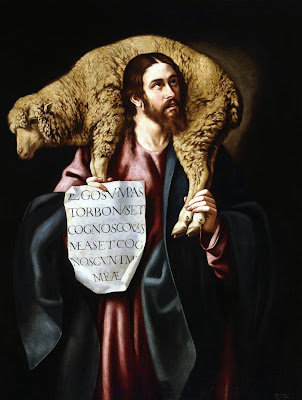The Good Shepherd

Misericordias Domini, the third Sunday of Easter, is one of the most well known Sundays of the Church year. The original Latin name for this day comes from the historic introit, which begins with the words Misericodias Domini and includes various verses of Psalm 33. The Sunday has long been nicknamed “Good Shepherd Sunday” because the Gospel reading is John 10:11-16: “I am the good shepherd. The good shepherd lays down his life for the sheep…”
Misericordias Domini means “the goodness of the Lord,” a phrase that expresses the joy that Christians experience because of the redemptive acts of God. This thanksgiving is all the more appropriate in the weeks following Easter since the miracle of the Resurrection has just been commemorated within the liturgical cycle. All of the Sundays after Easter are intended to illustrate the newness of life that we have in Christ, and this third Sunday of the Paschal season is no different.
The readings for Good Shepherd also reflect these realities, depicting our lives as Christians in terms of sheep that follow their master. The more recent Old Testament passage from Ezekiel recounts the Lord saying, “Behold, I, I myself will search for my sheep and will seek them out.” The Epistle that is often used comes from 1 Peter, describing mankind’s wayward actions in terms of sheep: “For you were straying like sheep, but have now returned to the Shepherd and Overseer of your souls.”
Additionally, this Sunday’s close proximity to the previous liturgical season of Lent gives Christians hope in the tender love and care of God: the sin and temptation, death, persecution, and fear that is experienced on earth (and was so acutely reflected upon during Lent) is instead replaced with the peace that Christ brought with his salvific works.
A Brief History

The depiction of Christ as the Good Shepherd is one of the oldest images in the history of Christianity. Artwork from the earliest days of the Church contains this depiction, with paintings in the Catacombs of Rome from the third century showing Jesus as a man carrying a sheep across his shoulders. These pieces were created at a time when it was illegal to make explicitly Christian artwork.
It is clear that the description of Christ as our shepherd has always provided significant comfort to the Church. The truth of Christ’s death and resurrection and his deepest, most incomprehensible love for mankind—central to the Easter mystery—is easily grasped in the Good Shepherd picture. Further, Christ’s continual nourishment and care for us, given to us through the bread and wine of the Sacrament, is also part of the paschal mystery. In Holy Communion we eat and drink, remembering that he gave his body and shed his blood to rescue us and bring us back to him. When we partake of the Sacrament, we feel intensely that we are the sheep of his pasture.
This image also helps Christians eliminate their fear of the future as we think about the Good Shepherd leading us as his sheep into celestial pastures. This is perhaps why the Good Shepherd image has often appeared as part of ancient cemeteries and why this theme is frequently preached on at funerals and in times of sickness and death.
Yes, the spiritual treasures that the image of the Good Shepherd provides us are vast and rich. It is easy to see why this Sunday has long been (and will likely continue to be) one of the most beloved of the Church year and why its placement as the third Sunday of Easter is certainly most appropriate.

Collect
O God, through the humiliation of Your Son You raised up the fallen world. Grant to Your faithful people, rescued from the peril of everlasting death, perpetual gladness and eternal joys; through Jesus Christ, our Lord, who lives and reigns with You and the Holy Spirit, one God, now and forever. Amen.
Lessons
Resources
Issues, Etc. interview with Dr. Bill Weinrich on John 10:1-21 “I Am the Good Shepherd”
Issues, Etc. interview with Dr. Ken Bailey on Jesus, the Good Shepherd
Propers found in Daily Divine Service Book: A Lutheran Daily Missal, edited by the Rev. Heath Curtis
References:
1. Lindemann, the Rev. Fred H. The Sermon and The Propers, Volume II: Pre-Lent to Pentecost. Concordia Publishing House. 1958.
2. Parsch, Pius. The Church’s Year of Grace: Easter to Pentecost. The Liturgical Press. 1963.
Images:
1. Christ as the Good Shepherd, Unknown , Belgium, Unknown.
2. The Good Shepherd, Cristóbal García Salmerón, France, 17th Century.
3. The Good Shepherd Mosaic, Unknown, Italy ca. 5th century.
Some links might be affiliate links which means we may receive a small commission at no extra cost to you. As an Amazon Associate we earn from qualifying purchases.




[…] in the Paschaltide and through the guidance of the previous Sundays of Easter, Quasimodogeniti, and Misericordias Domini, the Church has been reminded of the Lord’s resurrection, the Lord’s appearance to his […]